Filter content below by Health Organization
Health Organization
In order to provide the best care possible, health care sometimes requires the use and generation of hazardous waste and garbage.
However, within construction, support services and delivery of care, we can choose materials that have a reduced negative impact on the environment, and look for ways to reduce and avoid excess and unnecessary material use and waste.
Goals and impact
- Divert waste to recycling and composting streams.
- Decrease overall waste generation.
- Promote safe materials and a circular economy.
- The materials we use should be safe for people and the planet.
- As many materials as possible should remain useful for as long as possible, through design for reuse, repair, reprocessing and, at end of life, recycling.
- Unnecessary material waste should be prevented by using leverage from procurement and environmentally preferable purchasing processes.
Increase waste recycled or composted in acute care owned sites (% recycled, annual average)
33%
2025
40%
2030
Increase waste recycled or composted in non-acute care owned sites (% recycled, annual average)
50%
2025
60%
2030
Decrease waste generated per floor area in acute care owned sites (kg/m2/year)
13.7
2025
12.3
2030
Decrease waste generated per floor area in non-acute care owned sites (kg/m2/year)
19.2
2025
17.3
2030
Increase waste recycled or composted in acute care owned sites (% recycled, annual average)
30%
2025
40%
2030
Increase waste recycled or composted in non-acute care owned sites (% recycled, annual average)
40%
2025
60%
2030
Decrease waste generated per floor area in acute care owned sites (kg/m2/year)
11.3
2025
10.2
2030
Decrease waste generated per floor area in non-acute care owned sites (kg/m2/year)
15.2
2025
13.7
2030
Increase waste recycled or composted in acute care owned sites (% recycled, annual average)
28%
2025
40%
2030
Increase waste recycled or composted in non-acute care owned sites (% recycled, annual average)
45%
2025
60%
2030
Decrease waste generated per floor area in acute care owned sites (kg/m2/year)
4.2
2025
3.8
2030
Decrease waste generated per floor area in non-acute care owned sites (kg/m2/year)
4.0
2025
3.6
2030
Increase waste recycled or composted in acute care owned sites (% recycled, annual average)
33%
2025
40%
2030
Increase waste recycled or composted in non-acute care owned sites (% recycled, annual average)
45%
2025
60%
2030
Decrease waste generated per floor area in acute care owned sites (kg/m2/year)
9.3
2025
8.4
2030
Decrease waste generated per floor area in non-acute care owned sites (kg/m2/year)
11.9
2025
10.7
2030
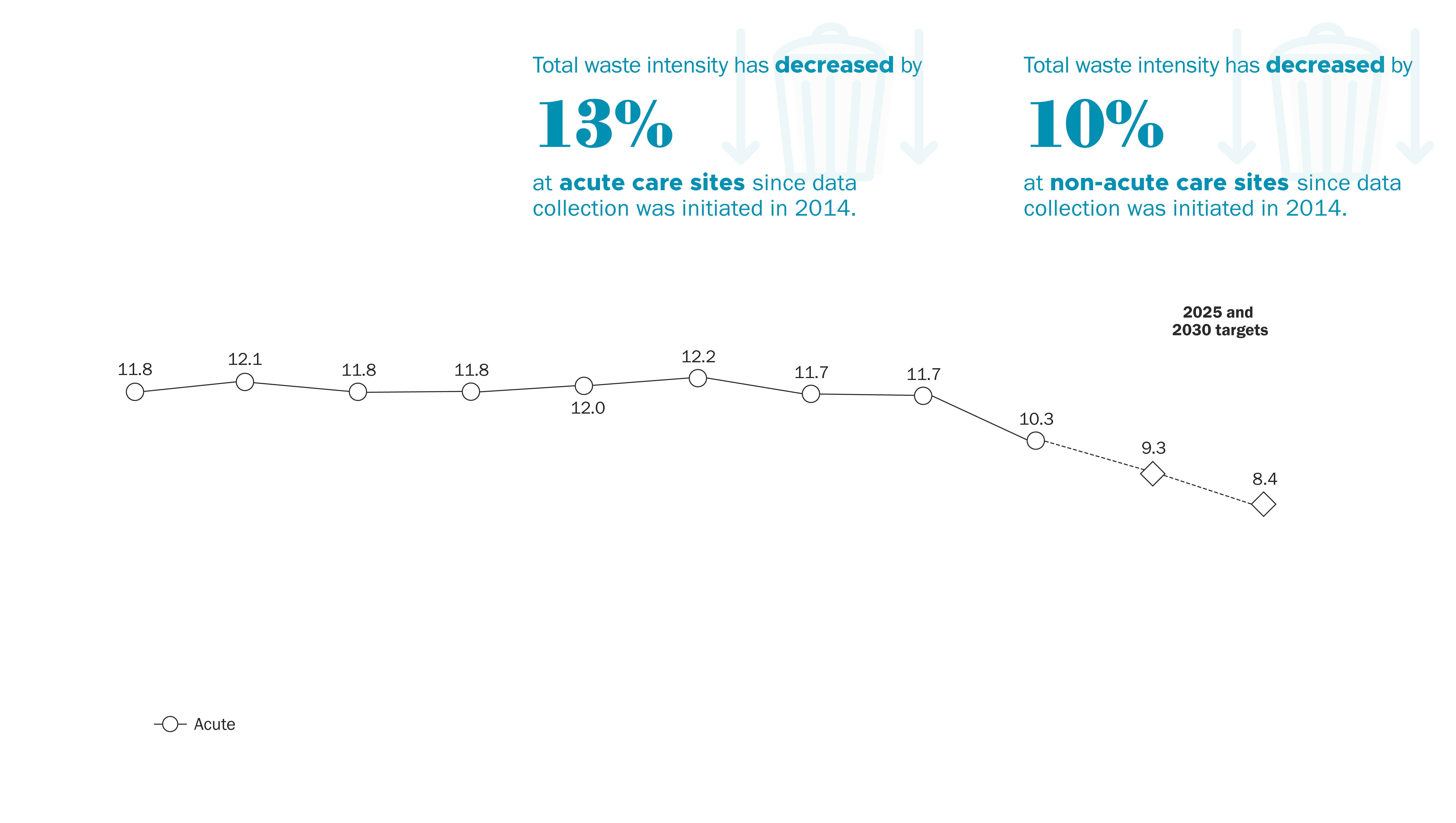
Want to see how we are doing?
Click here to read the latest Environmental Performance Accountability Report
Facilitation and support

Sarah Scanlan
Regional Sustainability ConsultantFeatured Story
Cooking Up Change
The Forensic Psychiatric Hospital kitchen goes paperless!
Tasty and convenient, the cookie is a classic treat—both within hospitals across North America and beyond. In fact, according to consumer research, Canadians consume over 303 million cookies every year.





